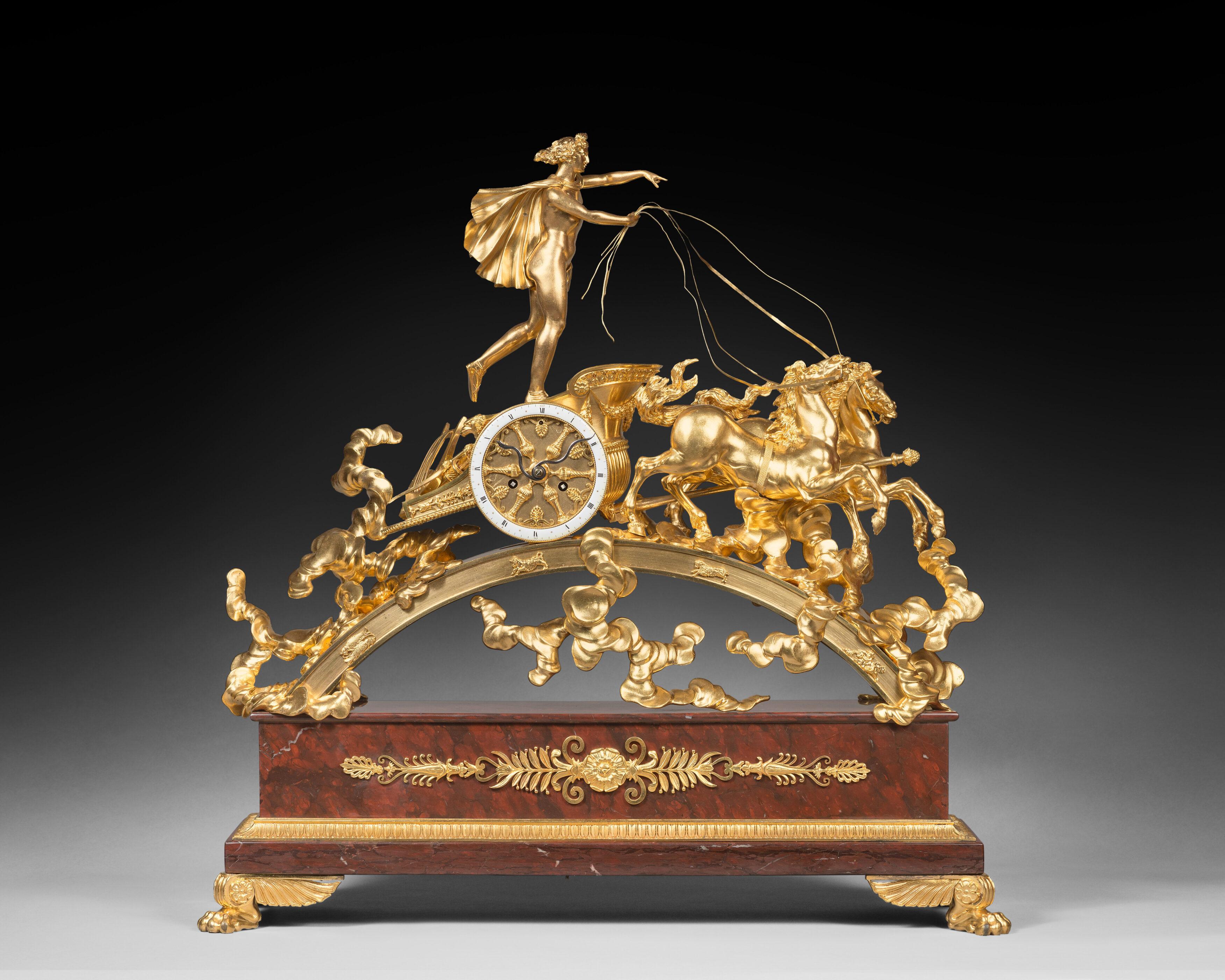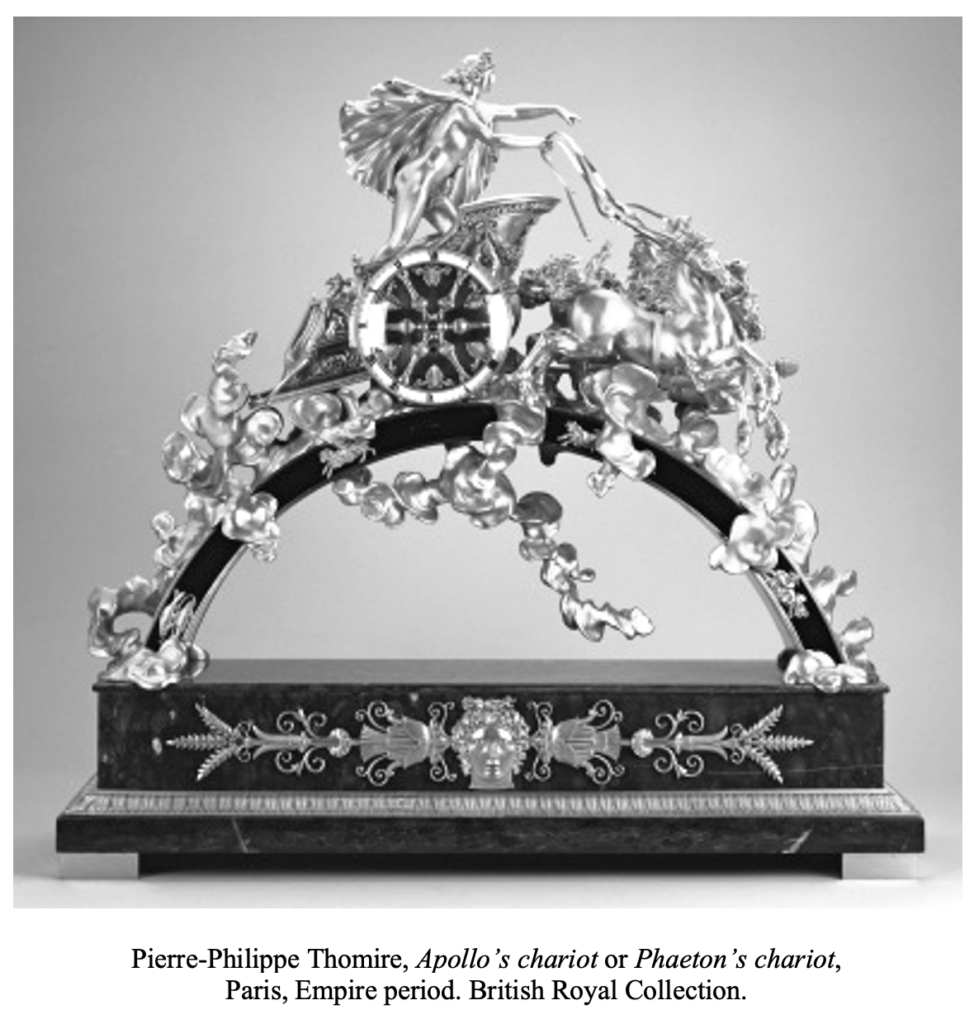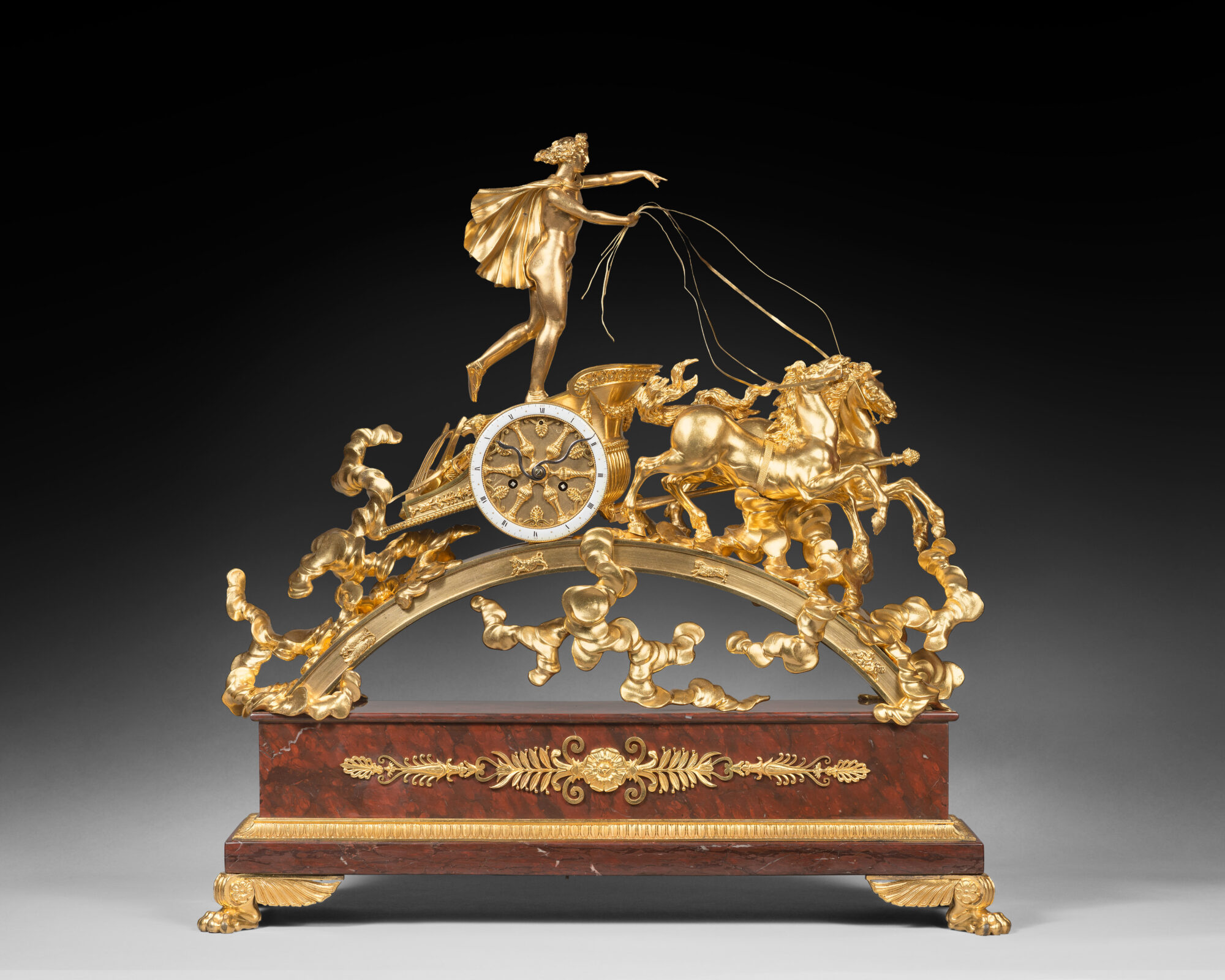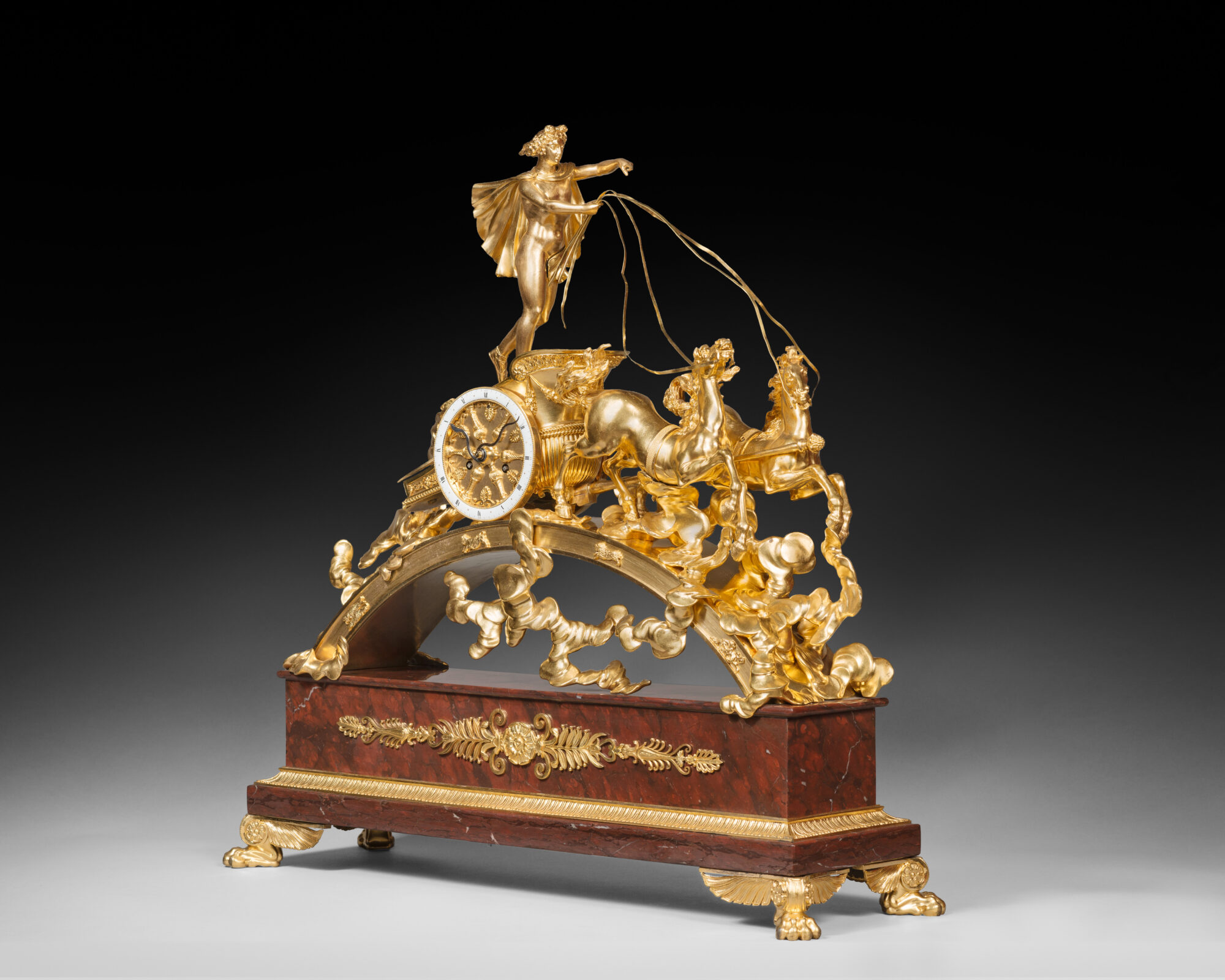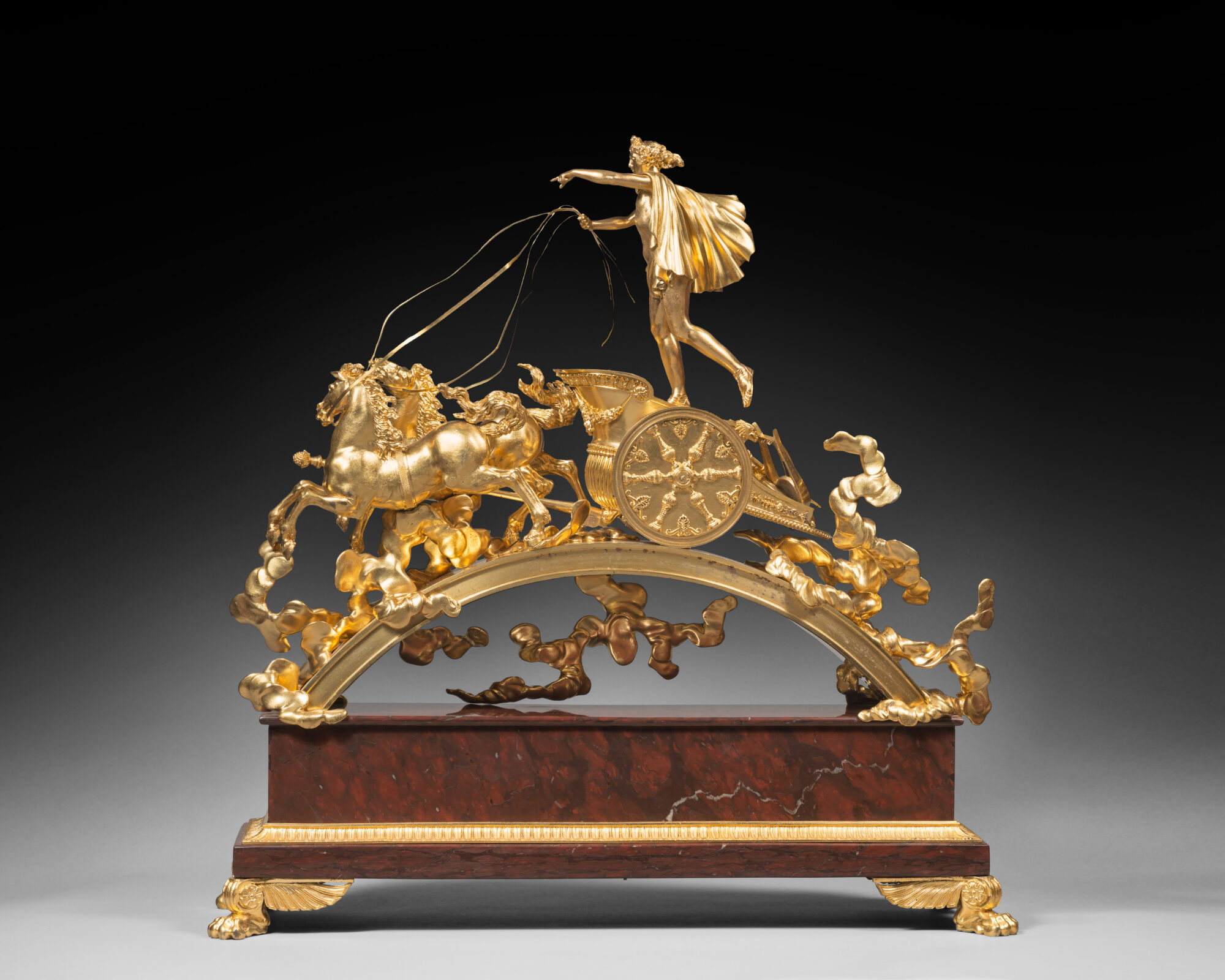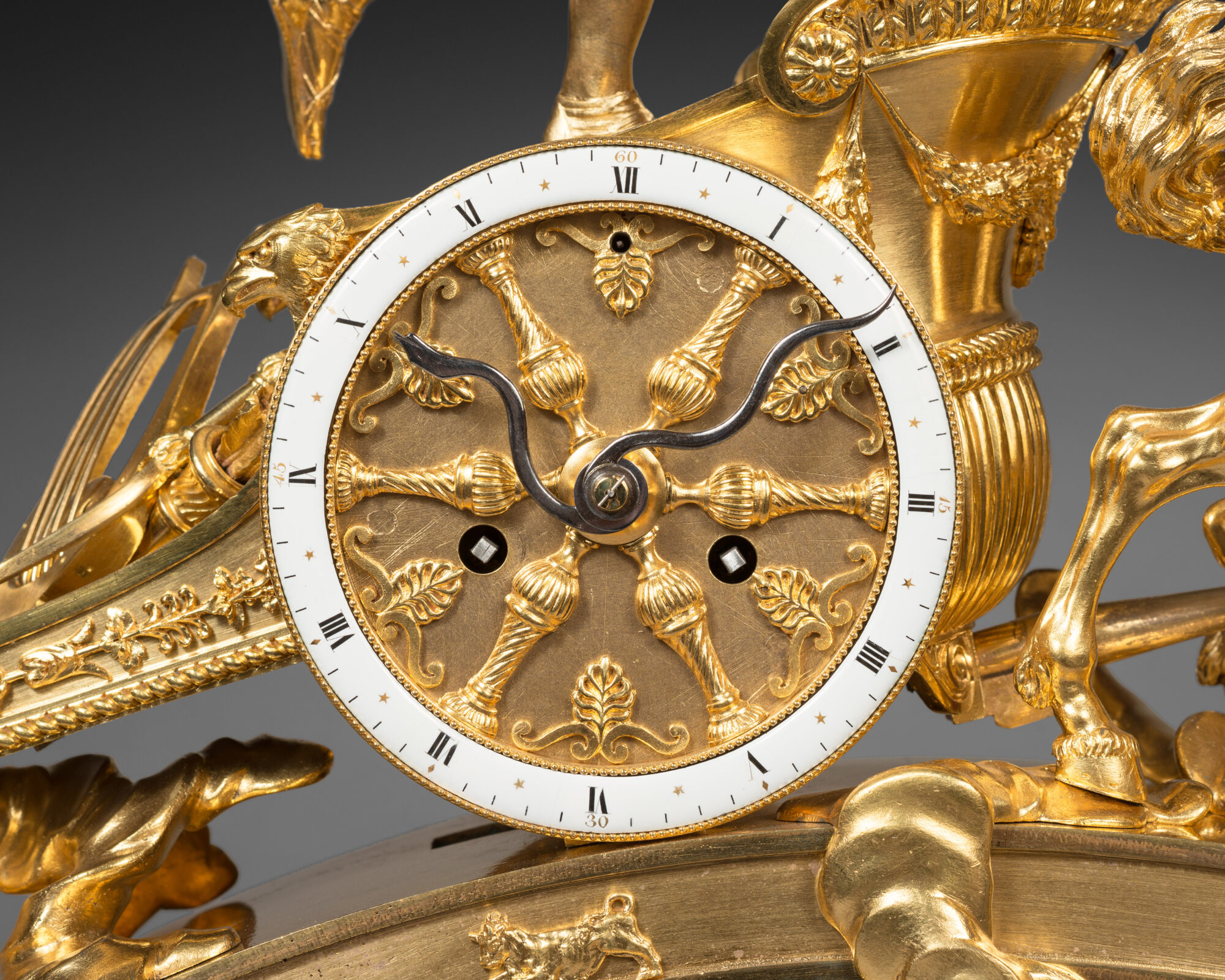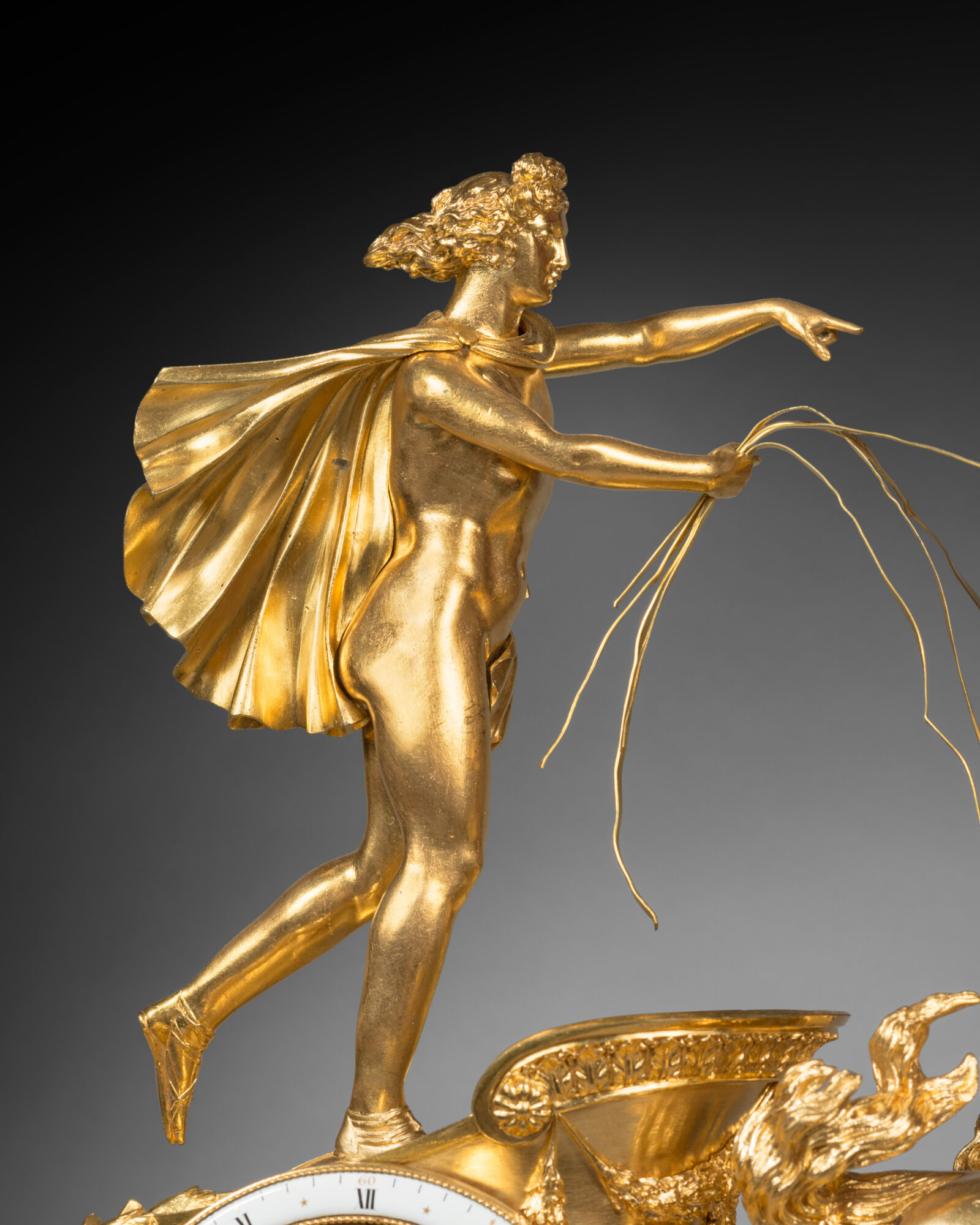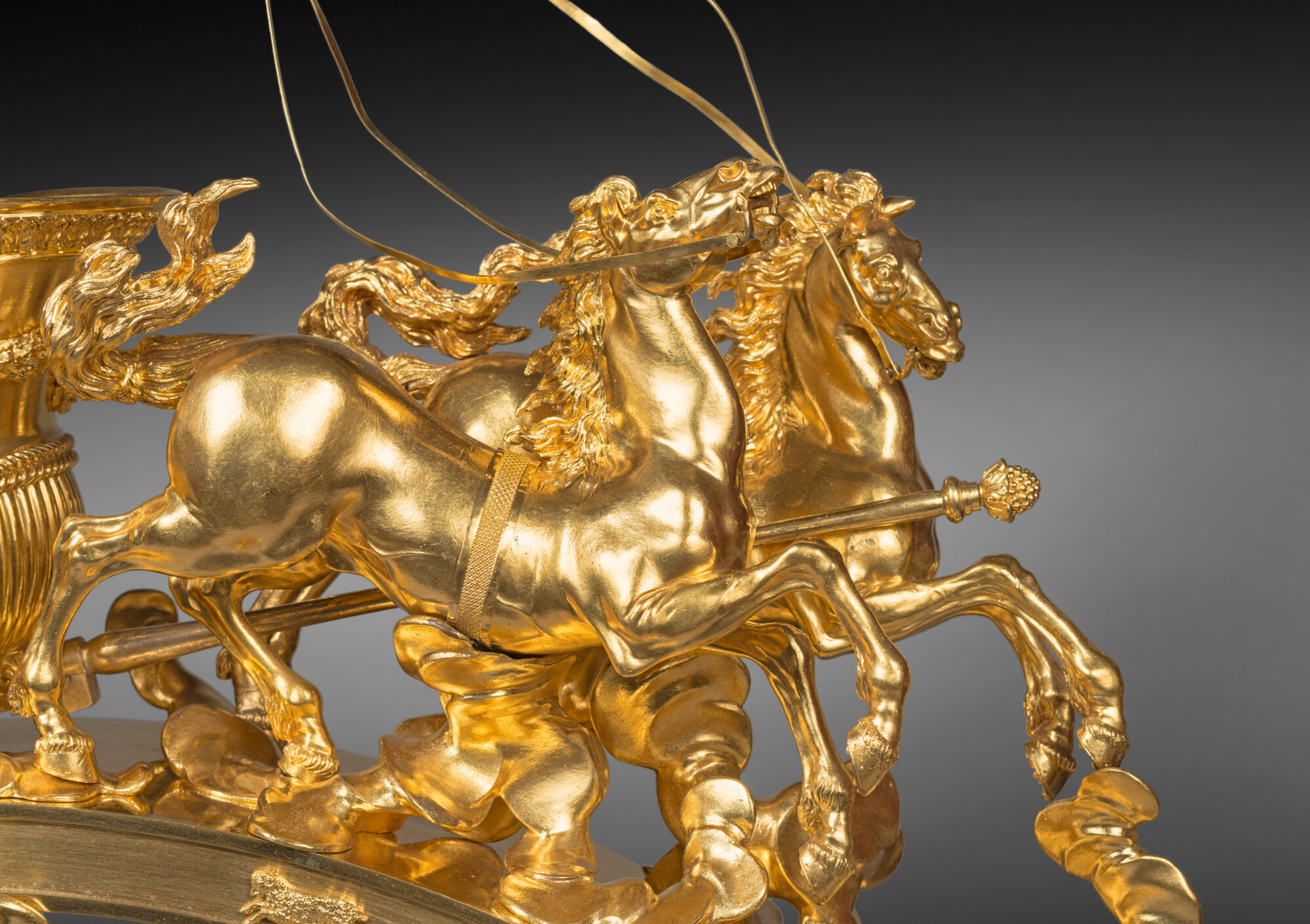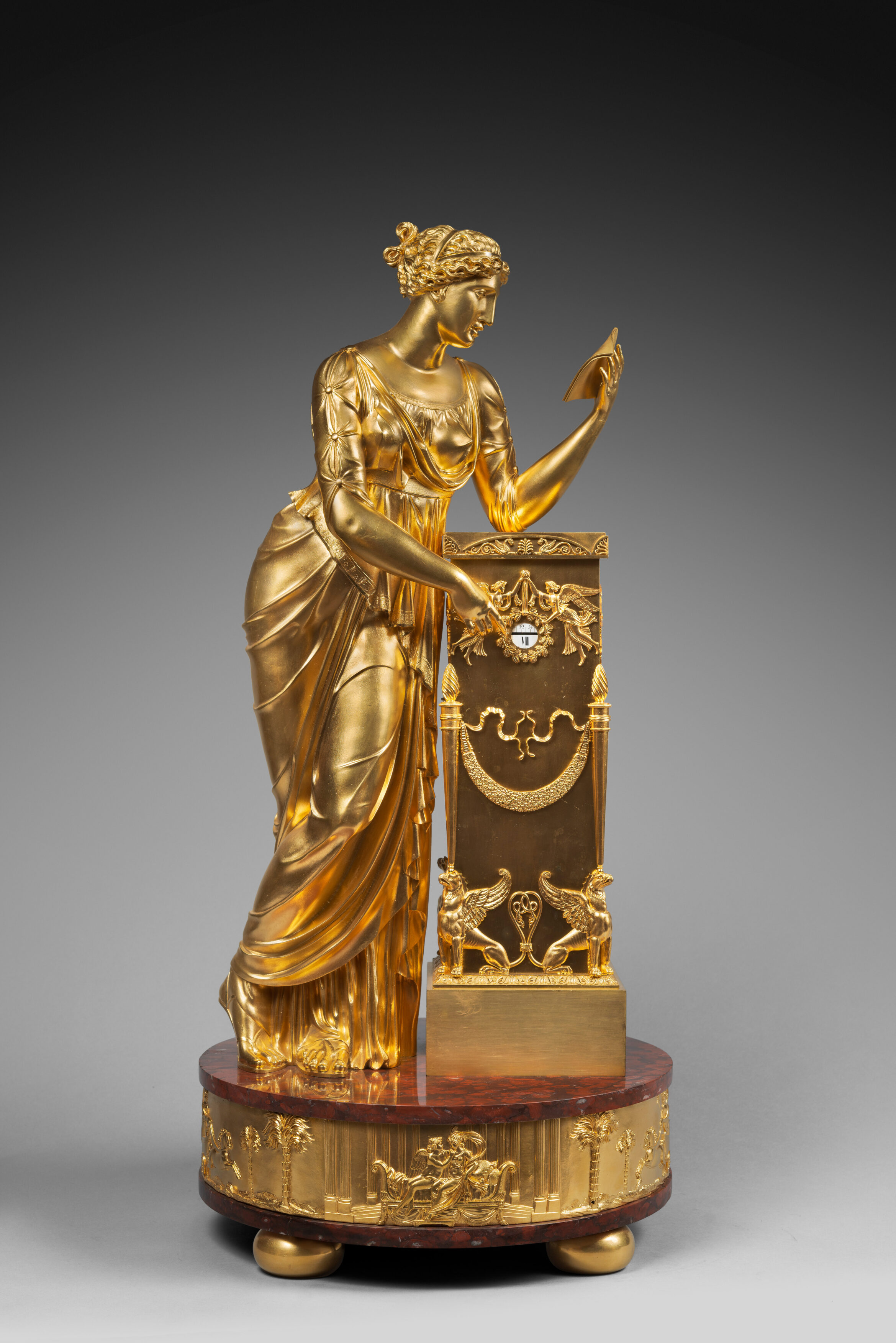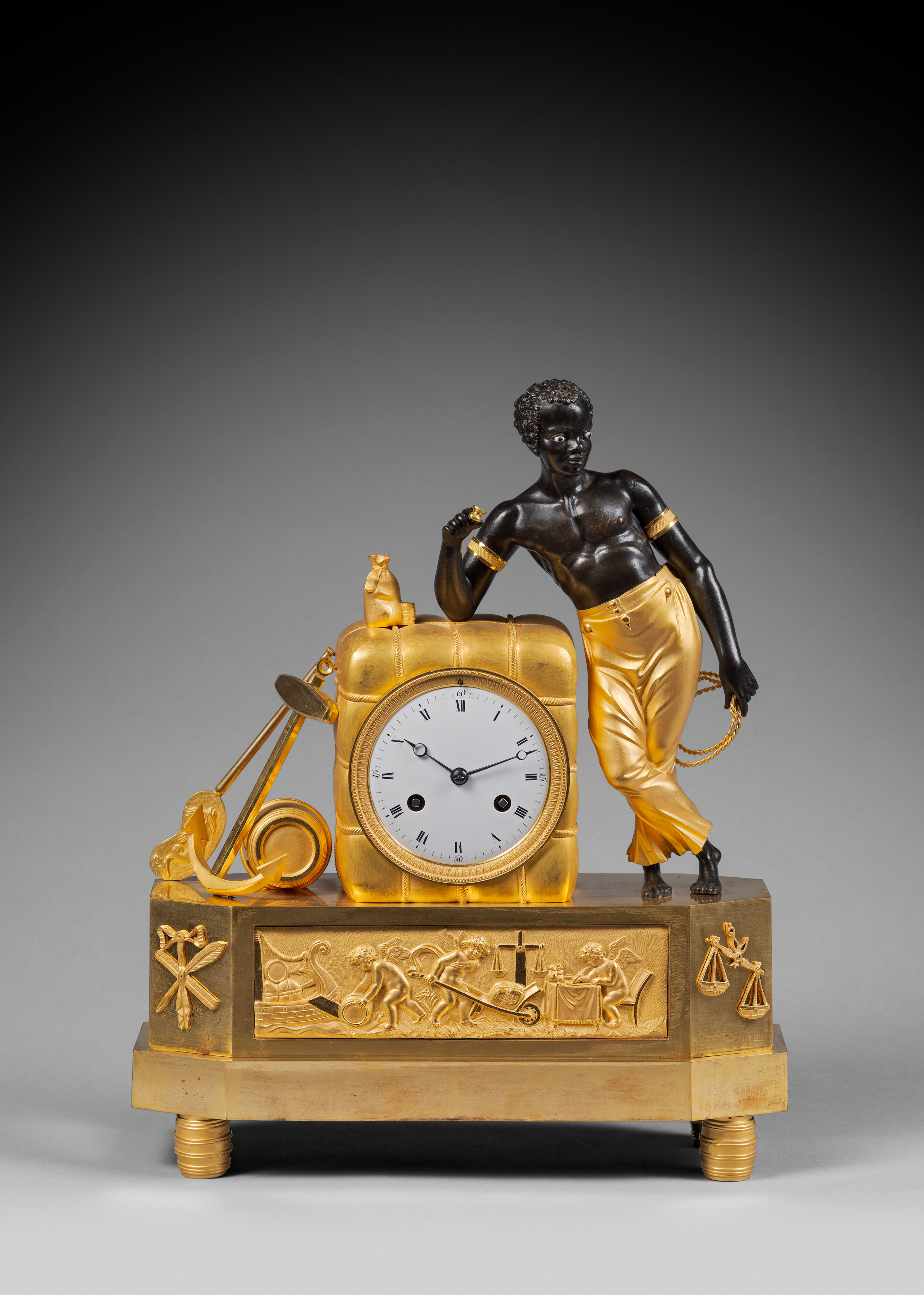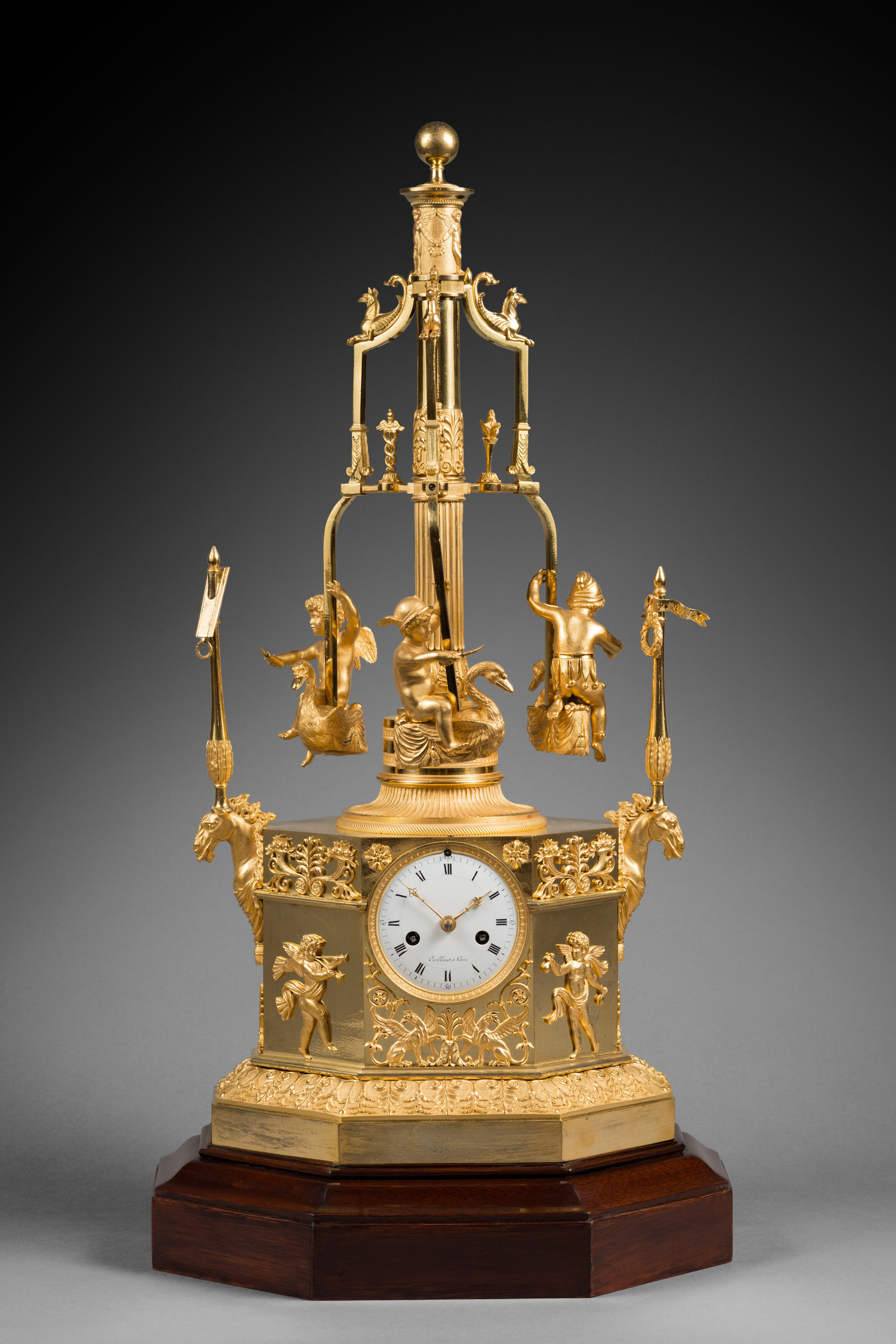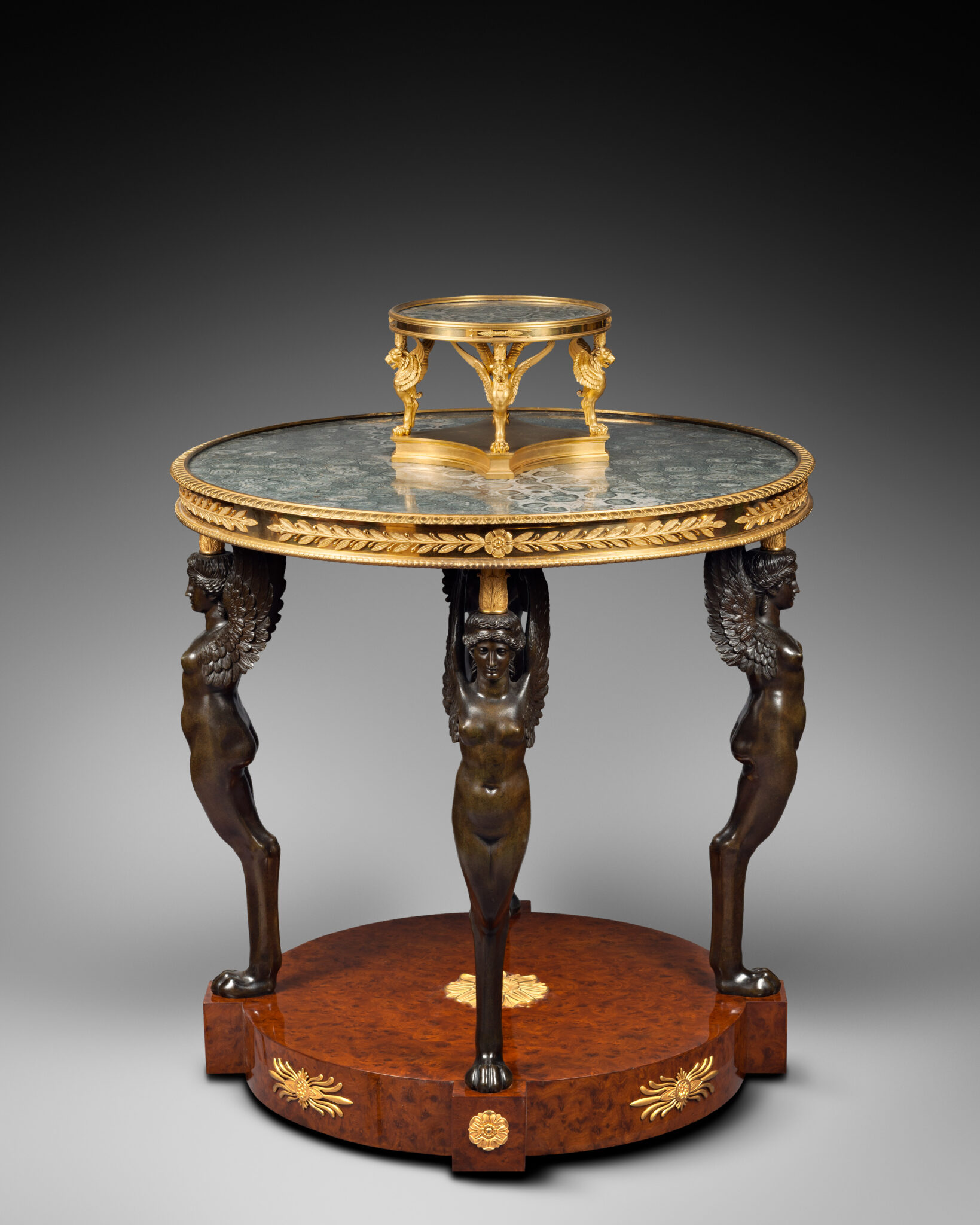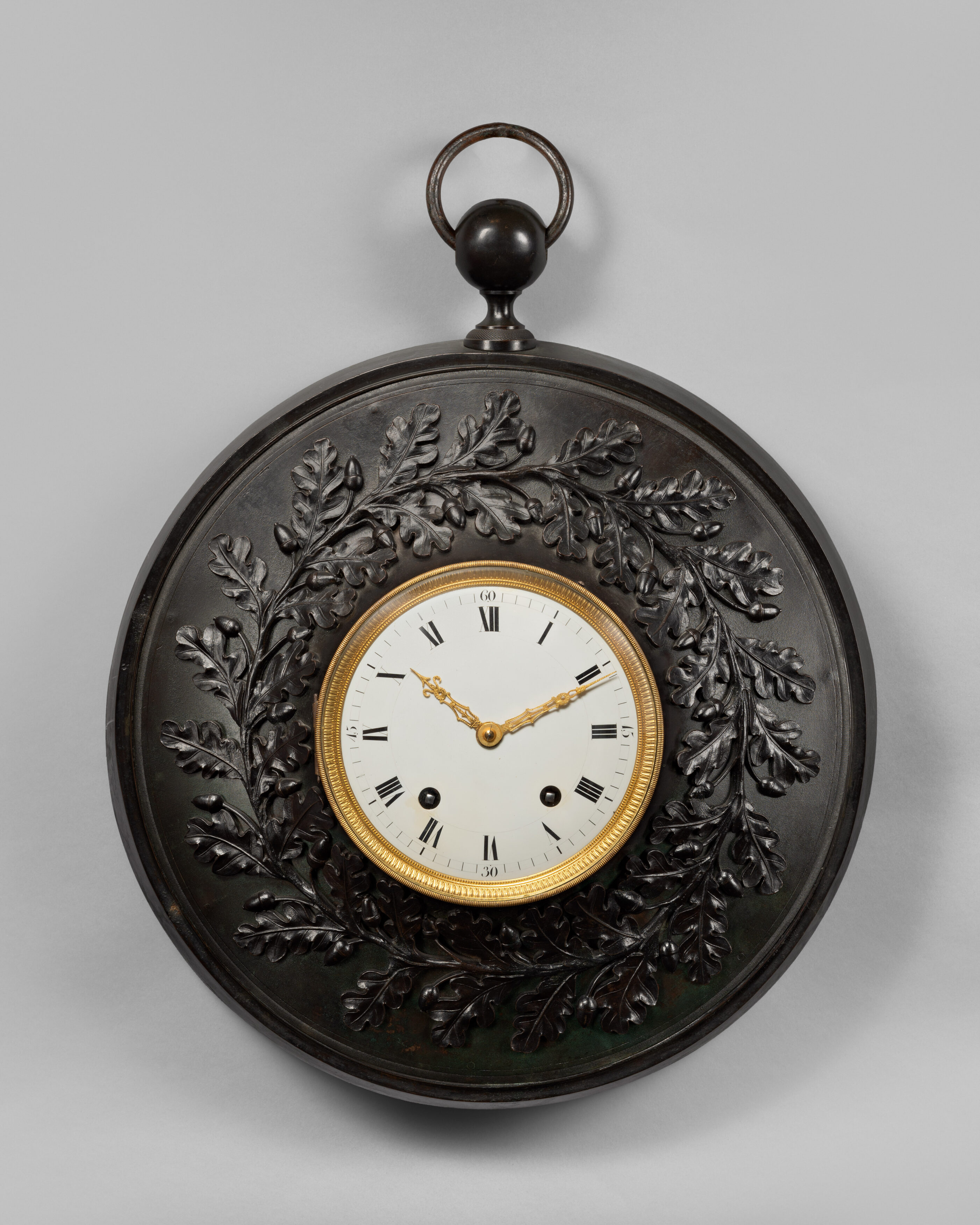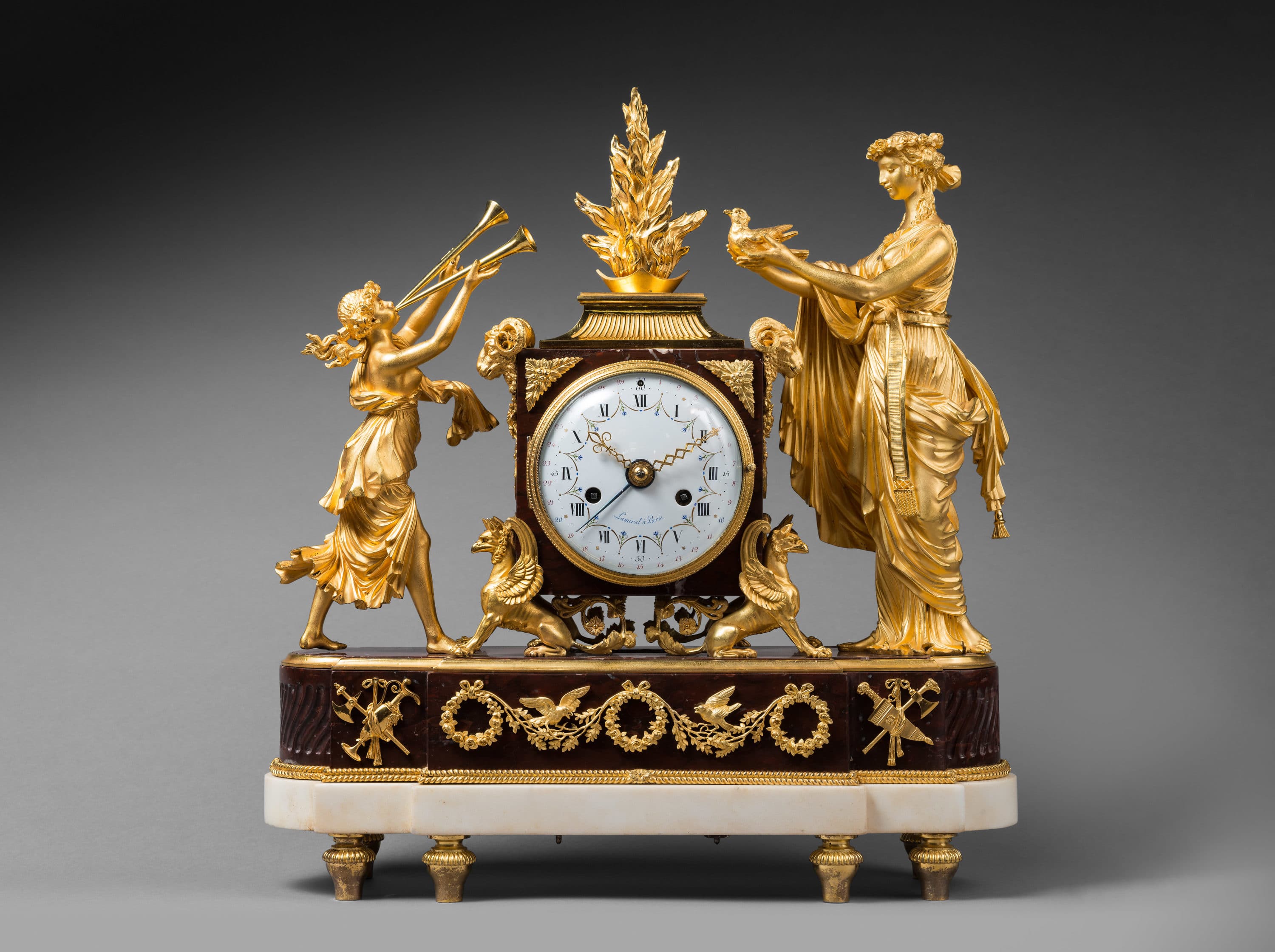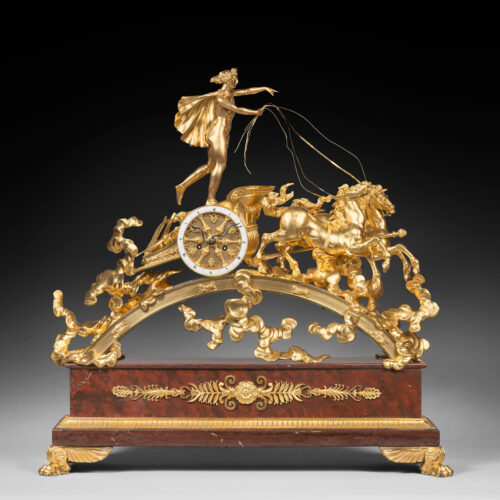Exceptional Finely Chased Gilt Bronze and Patinated Bronze Chariot Clock representing Apollo travelling through the Zodiac
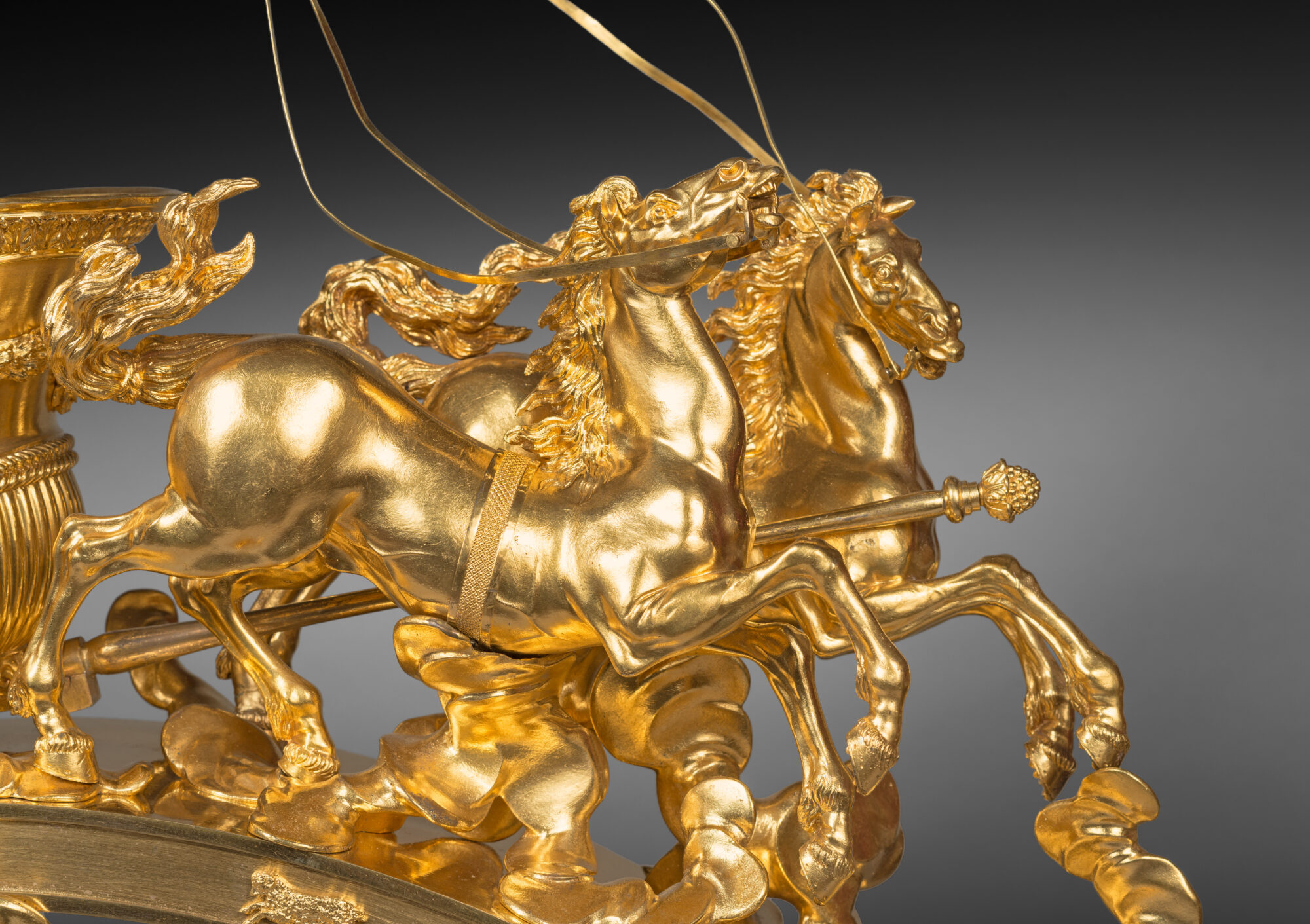
Case attributed to Pierre-Philippe Thomire
Paris, Empire period, circa 1805
The dial of this spectacular clock represents the wheel of a chariot drawn by two spirited horses driven by Apollo (or Phaeton), with his cloak floating in the breeze. It is elaborately decorated with garlands, palmettes, leafy scrolls, griffons, an archer’s bow, and a lyre. The arch of the Zodiac is adorned with superb floating gilt bronze clouds; its surface features gilt bronze symbols of the astrological signs. The Red Griotte marble base is highlighted by two symmetric palmette branches centered by a rosace. The base rests on four finely chased gilt bronze winged lion paw feet.
Discover our entire collection of antique mantel clocks for sale online or at the gallery.
La Pendulerie is the specialist in fine and rare antique clocks, based in Paris.
This clock is remarkable for its unusual subject and for the extraordinary quality of its chasing and gilding, which testify to the immense talent of the bronzier who created it in the late 18th or early 19th century, Pierre-Philippe Thomire. The attribution to Thomire is confirmed by a note in the inventory drawn up in 1829, after the death of gilder Pierre-François Feuchère: “n° 69. Clock, Apollo’s chariot travelling through the Zodiac, bronze and matte gilt, silvered clouds, stepped griotte base ornamented by the moon phases. The model is by Thomire; the retail price was 1500 francs”. Thomire produced two variations with differing proportions, the first – the present clock – with two horses, and the second, with four horses.
Very few examples are known to exist. One clock, with two horses and silvered clouds, is illustrated in G. and A. Wannenes, Les plus belles pendules françaises de Louis XVI à l’Empire, Florence, 2013, p. 354. Three clocks with quadriga chariot (4 horses) are recorded: the first, probably formerly in the Russian Imperial Collection, was sold in Berlin by Rudolf Lepke in February 1929; the second, whose movement was replaced by Vulliamy, is in the Royal British Collection (see E. Niehüser, Die Französische Bronzeuhr, Munich, 1997, p. 32); a further example, ordered in Paris in 1798 by Tsar Paul I for the Saint Michael Palace in Saint Petersburg, is in the Hermitage Museum (illustrated in M. Gay, “Présence horlogère française à Saint-Pétersbourg”, in ANCAHA, Spring 2008, n° 111, p. 15).
Pierre-Philippe Thomire (1751 - 1843)
Pierre-Philippe Thomire was the most important Parisian bronzier of the last quarter of the 18th century and the first decades of the following century. Early on in his career he worked for Pierre Gouthière, ciseleur-fondeur du roi, and toward the mid-1770’s began working with Louis Prieur. He later became one of the bronziers attached to the Manufacture Royale de Sèvres, creating the bronze mounts for most of the important creations of the day. After the Revolution, he purchased the stock of Martin-Eloi Lignereux, thus becoming the most important suppliers of furniture bronzes for châteaux and Imperial Palaces. In addition, he worked for a wealthy private clientele, both French and foreign, including several of Napoleon’s Marshals. Thomire retired in 1823.
